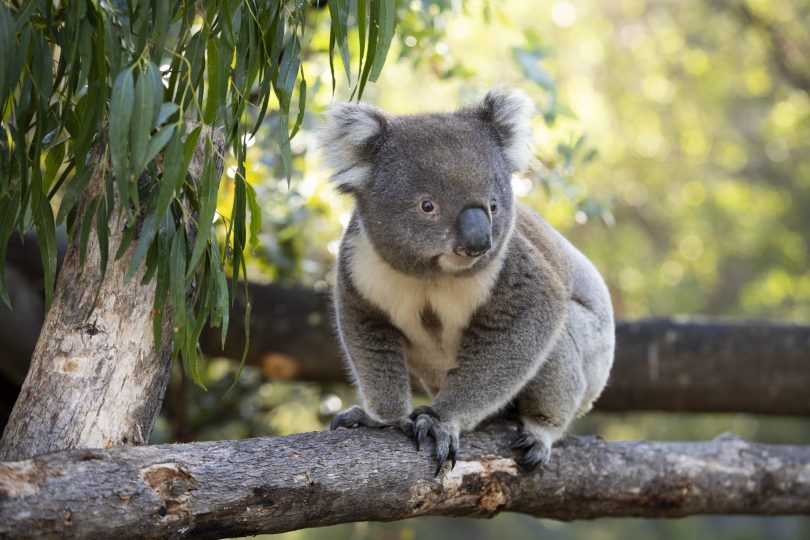
Koala populations and habitat on the NSW South Coast are being put under the microscope. Photo: Michelle Kroll.
Dr Keith Joliffe has been watching and studying koala numbers for more than a decade.
A long-time koala researcher and a volunteer with the not-for-profit environmental group the Coastwatchers Association, he continues to be involved in the group even after moving to Canberra.
“We’ve done citizen-science work in the area where we’ve examined koala history, we’ve followed up many contemporary reports and we’ve had habitat modelling done on potential home range areas and linkages through breeding corridors.”
To further their work, the Coastwatchers Association is now the recipient of a $200,000 grant from the Federal Government.
“The Coastwatchers is a very small organisation, so we’ve never had enormous funds,” he said.
“It’s a wonderful thing. A grant of this size was unexpected for us.”
Part of the funding will cover professional modelling, which Dr Joliffe hopes will expand their understanding of koalas’ lives.
“A contractor will overlay multiple maps, which will enhance the citizen-science modelling that we’ve already done,” he said.
“That means we can draw conclusions about the most promising potential home range areas and breeding corridors across the region and how they connect to koala populations beyond our region as well because the native population connections are essential for breeding.”
To help increase their understanding of on-the-ground conditions, drones will track koalas or see animals that cohabitate with them.
“The contractors have already been engaged for that, but they’re in Antarctica,” he said.
“They’ll be back in early March and they’ll use thermal drones at night in at least 15 strategically chosen locations across the Eurobodalla and lower Shoalhaven.”
Finally, the project will plant 6000 trees across properties, state forests and national parks to help restore koala habitat.
“The plants are already being propagated – the Eurobodalla Regional Botanic Gardens’ nursery is growing those stems for us now,” he said.
“Those are all species that have been documented as high-use koala tree species.”
Work began last year and is expected to continue until August 2024.
In years past, residents and visitors would occasionally see a koala, but Dr Joliffe said they were becoming increasingly rare on the coast as bushfires and habitat loss leave their mark.
“The population is extremely low, to the point where we fear functional extinction,” he said.
“In the Eurobodalla and lower Shoalhaven, there are very few koalas.
“There are more koalas further south in the Bega Valley and more koalas to the west in the Cooma-Monaro and Palerang areas.”
For Dr Joliffe, a key hope of the project is that it will raise awareness and knowledge of the South Coast’s koala population.
“When you talk to people, especially the old folks who’ve been around a long time, they can tell you lots of good stories,” he said.
“But there’s also a lack of awareness about the realities of things, and about things like koala breeding patterns and population distribution and the like.”










